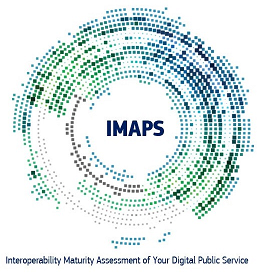

E-government and digital public services across Europe are creating sustainability, economies of scale and savings of millions of euros, in areas such as cross-border knowledge management and data services, open and accessible digital public services, and systems and processes that allow people to move freely in the EU whilst easily dealing with public services outside their home country.
As part of its digital strategy, the European Commission is working to help public administrations across Europe to make the change to digital so that all citizens can enjoy the benefits of smart public services. It is focusing on reducing barriers to public services and ensuring they are accessible across borders.
New and innovative technologies are being developed by government and public services, and there is a drive to rethink systems and processes, and challenge and change behaviours, to create sustainable and efficient citizen facing services.
At the heart of this - and key to its success - is the drive for interoperability across technology, systems and services.
So what is interoperability and how does it affect me as an e-government professional?
At its core, interoperability is the ability of organisations to interact with each other across data, systems and processes, to achieve common goals. It involves the sharing of information and knowledge through business processes, by means of the exchange of data between ICT systems.
Interoperability is a fundamental principle underpinning the free movement of goods, capital, services and people between the 27 Member States of the EU, and is founded on the eco-system of interconnected networks, systems and data that can make this happen.
It is about digitising the public sector and ensuring coordination at European and national levels to avoid digital fragmentation of services and data, and helping the EU’s digital single market to work smoothly.
But what does it look like?
Two good examples of solutions that are being built to support open data and the sustainable reuse of public sector information are the Open Data Support initiative (https://www.opendatasupport.eu/) and the Fosseps programme (https://joinup.ec.europa.eu/collection/fosseps).
Open Data Support is a 36 month project (under DG CONNECT of the European Commission) to improve visibility of, and facilitate access to, datasets published on local and national open data portals, to increase their re-use within and across borders. It is based on the principle that a piece of data or content is ‘open’ if anyone is free to use, reuse, and redistribute it, with possible requirements to attribute its source.
FOSSEPS stands for Free and Open Source Solutions for European Public Services. It has its origins in the 2021 initiative “Europe-wide solutions for free and open source software use by public services in the EU”. It is designed to manage and protect open source software and solutions, and treat it as a collective, shared and valuable European asset.
The FOSSEPS Pilot Project will:
Great – where do I start?
If you need a general introduction to the concepts of interoperability and what it means for integrated European services, the Introduction to the European Interoperability Framework (EIF) course on the Interoperable Europe Academy is a good place to start.
The EIF course will help you get a good understanding of the main components of the EIF and how to apply them in real-world scenarios, using practical case studies and scenarios. The course is targeted at a variety of different roles working in the digitalisation and integration of public services (such as policy makers, professionals, academics, civil servants).
Follow the EIF course via this link.
CIOs and leaders who need to benchmark their current implementation policies may want to start with an Interoperability Maturity Assessment, using the IMAPs tool. The Interoperable Europe Academy provides a full introductory course to IMAPS, to understand what the IMAPS solution is about and how IMAPS can support public administrations in improving their digital public services towards seamless interoperability, including:

Access the IMAPS course via this link.
Further support from the Interoperable Europe Academy
The Interoperable Europe Academy brings together tools, learning, information into one place to aid the development and implementation of effective interoperability solutions. To learn more about the initiative please look at their collections and solutions on Joinup, or visit this page for more information about the courses.